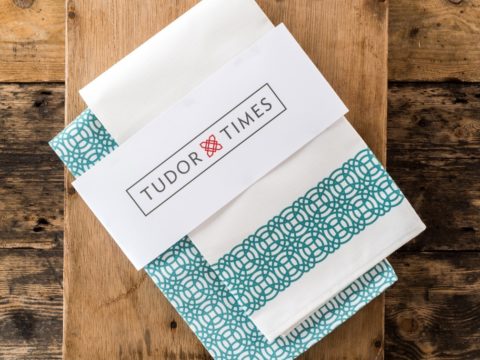John Knox: Life Story
Chapter 9 : Return to Scotland
Before long, Knox received letters from Scotland, suggesting he return. The political situation there seemed to be settling down. The regency had been taken over by the Queen Dowager, Marie of Guise, who was a tactful and clever politician. She was on good terms with many of the lords who were leaning towards the Reformed church, and it was hoped that she too, might convert.
Marie had no intention of changing her religion, but she had no inclination to persecution, and her main aim was to keep Scotland as a faithful ally of France, in opposition to England. She was willing to work with all parties to achieve her aims, particularly her step-son, Lord James Stewart. Knox was persuaded to return to test the waters.
He arrived in Scotland in September 1555, and found lodgings in Edinburgh, in the house of a Protestant merchant. Despite having left Scotland in 1547 as a rebel, a traitor and a prisoner, Knox was soon visited by many of the nobility, including Sir William Maitland of Lethington, whose long-term aim was an alliance between Scotland and England.
Since Marie of Guise turned a blind eye to Protestantism amongst the Scots nobles, many of them humoured her by occasionally attending Catholic mass. Knox was horrified and immediately insisted that such compromises were anathema. Encouraged by Knox’s enthusiasm, the Protestants became more certain of their position.
One of the leaders, Sir John Erskine of Dun, invited Knox to stay at his home near Montrose, where Knox was surprised, and pleased, by the numbers who came to hear him preach. Knox wrote to Elizabeth Bowes that, if he had not seen it with his own eyes, he would not have believed his country men were so open to the truth.
After a month at Dun, Knox moved to Mid Calder, to the home of Sir James Sandilands. Whilst there, he received several distinguished visitors, including Lord James Stewart, who had not yet committed to Protestantism. He was urged to preach in Edinburgh, still firmly Catholic, and visited a number of houses there to support the Protestant minority. After that, he undertook a preaching tour in the south and west of the country. He stayed at Finlayston, on the banks of the Clyde with the Earl of Glencairn, one of the most committed supporters of Protestantism.
Knox had not been keeping a low profile. Whilst there was no strong government support for persecution, flagrant proselytising could not be condoned and he was summoned to appear on charges of heresy in front of the Archbishop of St Andrew’s (still Lord John Hamilton, half-brother of the Earl of Arran).
The hearing was scheduled for 15th May 1555, to take place in Edinburgh. Generally, those accused of heresy failed to answer any summons, but Knox decided that he would answer the charges, confident that he had enough public support to escape punishment – or that his oratorical skills would convert many more.
Marie of Guise, aware that a public disputation with Knox would cause trouble, ordered the Archbishop to cancel the hearing. If she hoped by this means to keep Knox quiet, she had done too little, too late. Knox proceeded to preach to the largest congregations he had yet faced for the next ten days, morning and evening, at the Edinburgh palace of the Bishop of Dunkeld.
Glencairn and his friend, the Earl Marischal, were so convinced that if Marie could only hear Knox, she, too, would be convinced of Knox’s correct exposition of the faith, that they persuaded him to write to her. Presumably, they hoped that he would pen a sycophantic letter, begging her to listen to him. But, if they did, they had misunderstood his character.
Whilst Knox tried to be suitably subservient to the Queen, he saw his mission as delivering the stern Word of God to sinners. He warned her that if she did not quickly ‘abolish all superstition’ and remove Catholic priests, her high rank would bring her nothing but torment.
The letter was delivered by Glencairn in person and Marie promised to read it. For her, the admonitions of a lowly preacher, and a heretic at that, were nothing but an occasion for laughter. Knox, hearing that she had treated his letter as a joke, immediately saw her actions as an insult to God – little considering that it might just be his own feelings that were injured. Far from wishing to persuade the Queen to covert, it was obvious to him that she was a hardened sinner, who would bring his fellow Protestants nothing but persecution.
Depressed that his exhortations had fallen on deaf ears, and concerned that, sooner or later, there would be moves against him by the Church authorities, Knox decided to take up the request of the English congregation in Geneva to join them.
Before he left, Knox was reunited with Marjorie and Elizabeth Bowes, and he and Marjorie were married. Sources differ on whether Marjorie eloped without her father’s consent, or whether he was glad to have his wife and daughter, who were convinced Protestants, out of England, where their uncompromising views might attract unwelcome attention.
Following the wedding, Marjorie and Elizabeth took ship for Dieppe, whilst Knox made a last visit to the Earl of Argyll, whose son, Lord Lorne, had been one of the lords who had visited him at Mid Calder. Pressed to stay in Scotland, he refused, but left his advice on how the Protestants there should conduct themselves, in a pastoral letter entitled ‘A letter of Wholesome Council Addressed to his Brethren in Scotland’. Having completed this missive in July 1556, he sailed for France.




